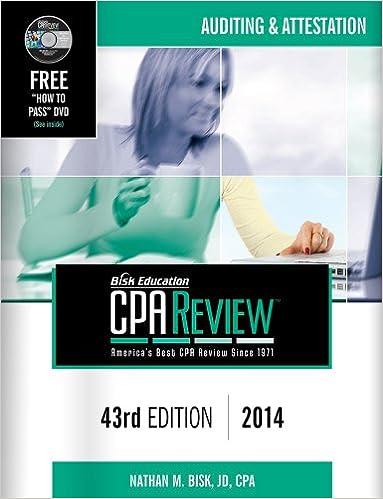Integrative Cases 3-72 (Algo) Financial Modeling (LO 3-1, 2, 3, 4,5) Three entrepreneurs were looking to start a new brewpub near Sacramento, California, called Roseville Brewing Company (RBC), Brewpubs provide two products to customers-food from the restaurant segment and freshly brewed beer from the beer production segment. Both segments are typically in the same building, which allows customers to see the beer-brewing process, After months of research, the owners created a financial model that showed the following projections for the first year of operations Sales Beer sales Food sales Other sales Total sales Less cost of sales Gross margin Less marketing and administrative expenses Operating profit $ 877,400 963,000 299,600 $2,140,000 512,102 $1,627,898 1,161, 800 $ 466,098 In the process of pursuing capital through private investors and financial institutions, RBC was approached with several questions. The following represents a sample of the more common questions asked: What is the break-even point? What sales dollars will be required to make $130,000? To make $550,000? . Is the product mix reasonable? (Beer tends to have a higher contribution margin rate than food, and therefore product mix assumptions are critical to profit projections.) What happens to operating profit if the product mix shifts? How will changes in price affect operating profit? How much does a pint of beer cost to produce? It became clear to the owners of RBC that the initial financial model was not adequate for answering these types of questions. After further research, RBC created another financial model that provided the following information for the first year of operations $877, 400 963,000 299, 600 $2,140,000 Sales Beer sales (41% of total sales) Food sales (45% of total sales) Other sales (14% of total sales) Total sales Variable costs Beer (13% of beer sales) Food (32% of food sales) Other (30% of other sales) Wages of employees (24% of sales) Supplies (1% of sales) Utilities (5% of sales) Other: credit card, misc. (2% of sales) Total variable costs Contribution margin Fixed costs Salaries: manager, chef, brewer Maintenance Advertising Other: cleaning, menus, misc Insurance and accounting Property taxes Depreciation Debt service (interest on debt) Total fixed costs Operating profit $114,062 308,160 89,880 513,600 21,400 107,000 42,800 $1,196,902 $ 943,098 $131,000 26,000 14,000 31,000 38,000 15,000 90,000 132,000 SAZZ.000 466,098 Required: Perform a sensitivity analysis by answering the following questions: a. What is the break-even point in sales dollars for RBC? b. What is the margin of safety for RBC? c. What sales dollars would be required to achieve an operating profit of $130,000? $550,000








